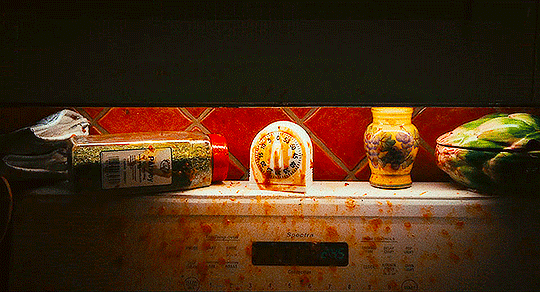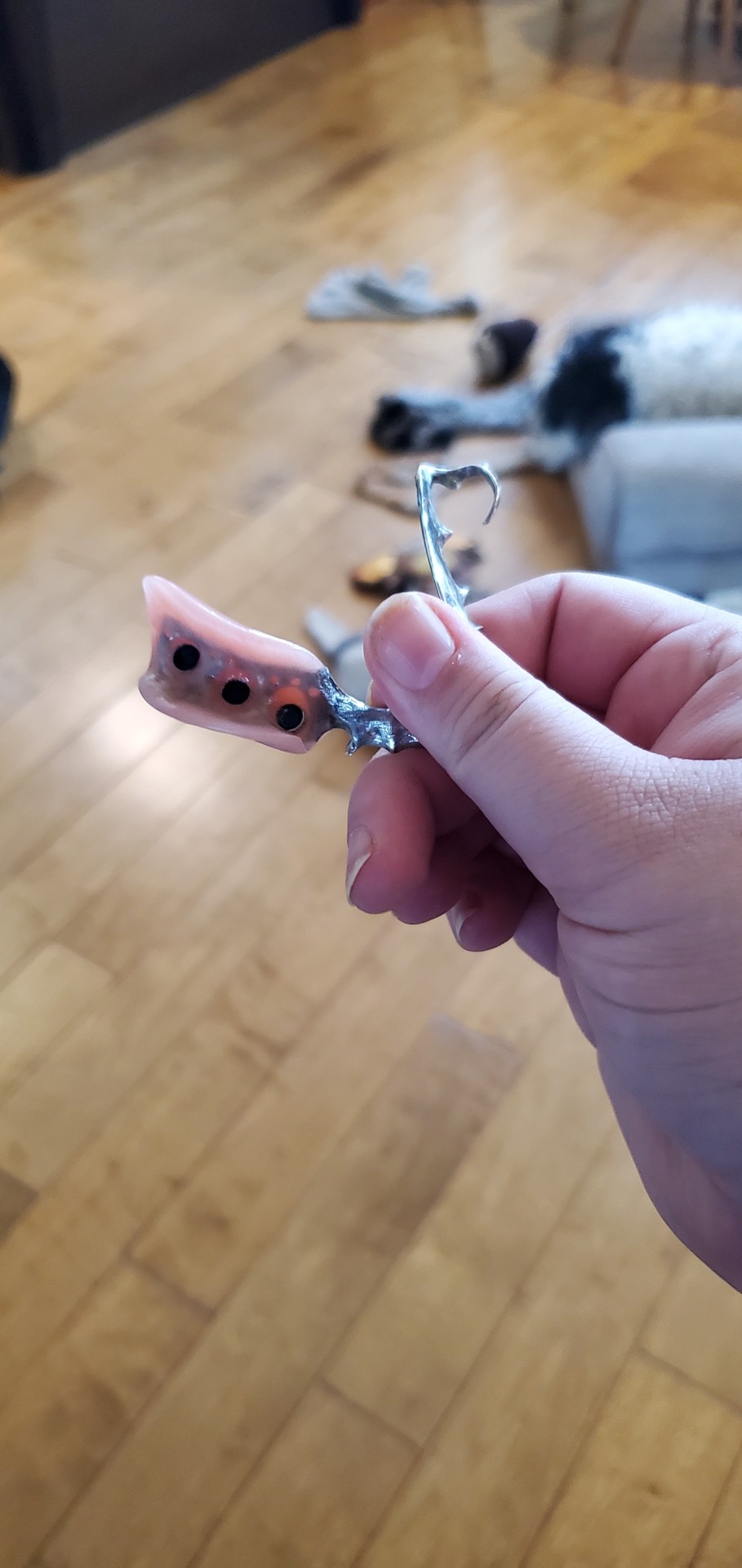#HELLP SYNDROME
Text
I've been in the hospital for 19 days today with pre-eclampsia, ans they think it's developing into HELLP syndrome so that's scary. I'm 28 weeks and 4 days today Dec 17, 2022. Baby isn't due until March 7, 2023. Baby is gonna be early, not just by months, but an entirely different year.
I just got the first of two steroid shots today to help the lungs develop quicker, and we're hoping Baby can stay in until Monday to get the full exposure to both doses of steroid and have maximum lung help.
They've also got me on 3 different meds to keep my blood pressure down, 2 of which I'm on the maximum dose for.
This pregnancy was so easy up until a few weeks ago, and I can't help but feel like I failed somehow. Like my body failed somehow, between the pre-eclampsia and the HELLP syndrome and the gestational diabetes.
The NICU team said that the baby will need to be in the NICU for about 2½ months after delivery to help finish developing. I'm scared to leave the baby in the hospital rather than coming home together, even though I know the NICU team here is amazing.
I was a NICU baby in 1995, and I turned out fine. I know plenty of NICU babies older and younger than myself, and medicine is always improving, so I know I have nothing to worry about.
But I'm scared anyways.
6 notes
·
View notes
Text
Tocolytics should be administered if labor begins prior to 34 weeks' gestation. Indomethacin is preferred prior to 32 weeks, and nifedipine is preferred after 32 weeks.
Placenta accreta spectrum can usually be detected reliability by 18-24 weeks with ultrasound specifically looking for large, irregular intraplacental sonolucent spaces (placental lacunae).
Prior to treating an ectopic pregnancy with methotrexate, there must be certainty there is no intrauterine pregnancy in order to avoid significant damage to a developing fetus. Serial bHCG levels and possibly repeat ultrasound confirming there is no intrauterine pregnancy must be performed prior to initiation of methotrexate. Candidates for methotrexate include patients who are stable with no hepatic or renal impairment and who will be able to follow up. Hemodynamically unstable patients with ectopic pregnancy require emergent surgical intervention and are not candidates for medical or expectant management.
Diagnosis of HELLP (hemolysis, elevated liver-enzyme levels, low platelet count) syndrome is vital, because it carries a mortality rate of up to 20% and is often initially misdiagnosed. Diagnosis is made by evidence of hemolysis, low platelet count (100,000/μL or less), and elevated levels of liver enzymes (defined as aspartate- or alanine-transaminase concentrations that are twice the upper limit of the normal range).
In some percentage of diabetic women, pregnancy will result in accelerated diabetic retinopathy and should be closely monitored. All women with diabetes who are pregnant or contemplating pregnancy should be extensively counseled about the increased visual screening requirements and risks associated with pregnancy.
Patients with preeclampsia with severe features before 34 weeks gestation require inpatient admission with corticosteroid administration and delivery at 34 weeks gestation. Fetal or maternal instability may require even earlier delivery under certain circumstances.
While preparing for delivery, administration of betamethasone may be considered in pregnant women less than 34w0d of gestation who are at risk of preterm birth within 7 days. A Cochrane review showed that the use of steroids had an overall reduction in neonatal death, respiratory distress syndrome, cerebroventricular hemorrhage, necrotizing enterocolitis, respiratory support, intensive care, and systemic infections in the first 48 hours of life.
#tocolytics#placental lacunae#placenta accreta#ectopic pregnancy#MTX#HELLP#HELLP syndrome#gestational diabetes#preeclampsia
2 notes
·
View notes
Text
The Worst is Yet to Come
I already posted about the note saying Ziggy, but tldr is that a series of misfortunes are still to come. I think Season 3 will begin jumping straight into the chaos that the end of Season 2 set up.

This whole past season was a build up to tension, a ticking time bomb as all those clocks reminded us. And in the end, yes, Carmy exploded, but everyone around him is also facing their own problems that keep getting pushed aside in order to pay attention to his. I think Season 3 will start right off with the fall out of it all.

We already know Marcus is going to have to deal with his mothers situation. Whether she's dead or is very ill, he is going to have to focus on that, and they only have 4 days until the official opening. Marcus plays a major role in so many dishes like the focaccia, cannoli, sundae, donut, and honey buns. Without him like half the menu is gone. Which might open up a window of opportunity to bring back our second favorite tatted up Chef from Copenhagen.

Unfortunately, I do think Natalie's shoulder pain is more than a passing comment. It can be sign of serious conditions such as preeclampsia, specifically HELLP Syndrome. Which is ironic, because she is always the one trying to help others, but the roles would finally be reversed and she'll be the one having to accept other people's help. HELLP is usually only treated at that point by giving birth or by going on bed rest and taking medications until it's ready to be induced, which she probably wasn't planning on doing for at least another month or two given that she's likely around 7ish months at the moment.


The Carmy and Donna reunion is not a matter of if but when. I think Natalie getting sick will be the catalyst for them coming together again. We know Carmy avoided his family after Mikey died and he still carries some guilt over that, and at this point Natalie is his only closest family member and he would not abandon her. We know Natalie still wants her mother in her life, and even though she still hasn't told her about the baby, she was planning to at Friends & Family. If she felt like there was something seriously going on, she or Pete would call her.

Richie. We saw him at his best but that doesn't mean he's fully changed overnight. After what Carmy said to him I could see him not returning for a while just to prove a point that he can be good on his own and he doesn't need Carmy's handouts. Which would put them in a tense spot at the restaurant.

Sydney, as much as she tries to communicate with Carmy, still keeps her actual feelings and frustrations with him bottled up. She jumps around hoops, just like him, to avoid saying directly what is bothering her. They still haven't discussed the mess at the end of Season 1 that was seemingly brushed under the rug when they decided to jump into the new build. I think she will find out either directly or indirectly that she is essential for Carmy keeping his cool, and that will put a lot of pressure on her. They spend so much time apologizing rather than actually trying to change things and all that has to burst out eventually.

With the chaos around him, the only thing Carmy knows how to control is the kitchen. I think we are going to see him go fully stone cold Michelin Chef because if Marcus, Richie, and Natalie are out, they're fucked.

86 notes
·
View notes
Text
Lawmakers in the South Carolina House passed a bill on Thursday protecting preborn children from abortion beginning at the point of fertilization — the first moment of their existence.
H. 3552, or the Human Life Protection Act, passed in an 83-31 vote. Representative John McCravy said the bill “sends a message that the days of abortion as birth control are drawing to an end, and it is now time for our pro-life Senators to keep their word and vote to pass this bill.”
The bill specifically references the Dobbs v. Jackson Women’s Health Organization decision handed down last June, which overturned Roe v. Wade, pointing out that South Carolina is exercising its political power to protect preborn children. The bill defines abortion as “the act of using or prescribing any instrument, medicine, drug, or any other substance, device, or means with the intent to terminate the clinically diagnosable pregnancy of a woman with knowledge that the termination by those means will, with reasonable likelihood, cause the death of the unborn human being….”
The bill states:
It is not a violation of Section 44-41-820 for a physician to perform a medical procedure necessary in his reasonable medical judgment to prevent the death of a pregnant woman, a substantial risk of death of a pregnant woman due to a physical condition, or the substantial physical impairment of a major bodily function of the pregnant woman, not including psychological or emotional conditions.
In reality, induced abortion — which deliberately ends human life in order to end a pregnancy — is not necessary to save the life or health of a pregnant woman. Emergency C-sections, preterm delivery, miscarriage treatment, and surgery for ectopic pregnancies are not considered induced abortions and are not prohibited by this bill:
It is presumed that the following medical conditions constitute a substantial risk of death or substantial risk of substantial physical impairment of a major bodily function of a pregnant woman: molar pregnancy, partial molar pregnancy, blighted ovum, ectopic pregnancy, severe preeclampsia, HELLP syndrome, abruptio placentae, severe physical maternal trauma, uterine rupture, intrauterine fetal demise, and miscarriage. However, when an unborn child is alive in utero, the physician must make all reasonable efforts to deliver and save the life of an unborn child during the process of separating the unborn child from the pregnant woman, to the extent that it does not adversely affect the life or physical health of the pregnant woman, and in a manner that is consistent with reasonable medical practice. The enumeration of the medical conditions in this item is not intended to exclude or abrogate other conditions that satisfy the exclusions contained in item (1) or prevent other procedures that are not included in the definition of abortion.
Women who undergo abortions would not face any penalties under the bill. Someone who illegally commits an abortion, however, could be sued for up to $10,000 for each violation, and also faces up to two years in prison. Additionally, the bill requires the biological father to cover 50% of pregnancy-related costs.
#prolife laws#prolife news#way to go South Carolina!!!!#and having men pay too!#good law#prolife#pro life#pro-life#anti abortion#south carolina#abortion#live action#news
283 notes
·
View notes
Text
im gonna sound like a crazy person but i just started omelette and Nat is having shoulder pain and it seems so inconsequential but she's pregnant and it might be nothing it might be she lifted something wrong it could be she slept weird it could even be a throwaway line of dialouge
but also
like
preeclampsia.... HELLP syndrome...
which is like.... its a really odd symptom (and not guaranteed) but also the easiest to visibly show on tv.
(also could happen from ectopic pregnancy but she's second/third trimester so that would have been caught way earlier whereas this would show up around now and also shes under a lot of stress which definitely does not help keep blood pressure stable and just the condition of pregnancy messes with all that)
so yeah i am /worried/ and i hope i am worrying over a throwaway thing.
#i could see it leading to preterm delivery so we get to see the baby earlier#but its a serious condition and i dont want anything to happen to her or baby#the bear fx#the bear#the bear season 2#manda watches the bear s2#my silly thoughts#im reading too much into this lmao
15 notes
·
View notes
Text
i think about the 42 babies born in no man's land so much. like, i totally buy that babies were being born in the restricted zone but when i think of those babies, i think of the following at minimum (that the writers definitely did not)
of those 42, 12 need formula !!! if the formula crisis of last summer taught us anything, it's that this is probably not good, to need formula in no man's land
and needing formula is kind of broad. what kind of formula did these babies need? god forbid they need a hypoallergenic formula due to an allergy
all of the babies shown in detective comics #741 are, like, sitting without support or crawling and man. sitting independently is a 6 month milestone. crawling is, like, 8-9 months.
so most of the women had to have been pregnant before no man's land. assuming ovulation on 1/1, the first day of no man's land, the babies would be due on 9/23 at the earliest. so they'd be at most, like, 3 months old. obviously leslie was joking about nights in no man's land getting cold, but also does chuck dixon not know anything about how long women are pregnant for? (answer: yes).
potential for premature babies without a nicu =/
did the joker kidnap 42 <3 month old babies? was he feeding the newborns every two hours? did joker's experience with newborns in no man's land prepare him for the fourth trimester after he had his clayface baby.
anyways, what happens to pregnant peeps who go overdue and there's no pitocin to induce labor? that generally doesn't lead to good outcomes due to the deterioration of the placenta past 40 weeks
also, some of these women had to have developed gestational diabetes. with no way of knowing.
also, ~maybe pre-eclampsia is caught if a woman's blood pressure runs high, but there's no way to check for protein in the urine. what happens when it turns into eclampsia? again, no way to induce labor. what if someone develops hellp syndrome.
none of these women got rhogam.
even in low risk pregnancies, 1 in 4 women need a c-section. was leslie performing c-sections? i know her speciality is apparently "anything we need her to be able to do" but, c'mon. really?
what if someone developed postpartum preeclampsia.
were these mothers more likely to develop puerperal fever due to high infection risk and limited medical supplies?
25-30% of people are positive for group-b strep. obviously they couldn't test for that. so potentially positive women were giving birth without antibiotics.
none of these babies got vitamin k or their first hep-b vaccine within the first 12 hours.
what happens to pregnant people who have, like, a missed miscarriage. if the body isn't expelling the tissue, you need a d&c or you're at risk for infection
ectopic pregnancies??? did women die from those in there??
plancenta previa or placental abruption???
hyperemesis gravidarum????
oligohydramnios or polyhydramnios?
were all 42 of these pregnancies just. complication-free?
chuck. i have questions. chuck. chuck. bat editoral of the 90s. help.
23 notes
·
View notes
Note
Hi dx- I don't know when you will see this but I have my OSCE resit in 3 days. I am feeling deflated and burnt out, and believe my performance last week was affected by a lot of nerves. I panicked, stumbled and messed up. These are my finals and so I basically need to know everything and anything but now that I've failed, my imposter syndrome has really kicked in and I just know I'll be even more nervous. Do you have any tips directly for the OSCE itself... How do I remain calm when I'm there. What do I say to myself. It doesn't hellp that the patient's and examiners always seem so deadpan.
Hey, I'm so sorry that your first exam didn't go well.
Nerves are real, they can be an absolute nightmare, and they don't define who you are, or how good you are. In an exam like this, it's very easy for us to stumble a bit and for our minds to go blank.
This doesn't make you a bad clinician, and lots of people fail an exam or two! You have every right to be there, and you have EVERY right to pass the exam. You're not an imposter, you're just another student who doesn't love exams - and many people who have struggled and passed felt exactly the same as you. Probably most of the doctors you've shadowed or even admired have been in your shoes and felt the same. I know that I have!
I don't know if it's happened yet, I check my messages reasonably often, but time is weird. On the chance that you see this before your exams, I'd say this:
Take your time. Take a moment to breathe before you do anything. Take a moment to read the brief, and then read it again.
Before you speak, take a moment to gather your thoughts. If you are stuck in the middle of something, it's OK to simply say that you need a second, and then move on. It's fine to say "OK, let me just take a second to make sure I haven't missed anything". And then take that minute. Or to summarise what you've done/learned so far. You don't' get marked down for repeating something twice, you get marked down for forgetting it altogether.
I hate that examiners seem so deadpan, too. But they ARE human, underneath that. They've all likely been there themselves! Just remember that they've had a long day, they are probably tired, and if they seem a bit bored, it really isn't you! There's nothing you could do to make the process thrilling for them - you just need to make it easy for them to tick things off their sheet.
Good luck! I hope that you give it your best shot, and I hope you can believe in yourself. I know medblr will be rooting for you!
9 notes
·
View notes
Text
I have performed abortions.
At 20 weeks, for HELLP syndrome, pulmonary edema, and renal failure. Mother would have died.
At 19 weeks for renal failure secondary to acute lupus nephritis, uncontrollable blood pressure. Mother would have died.
At 15 weeks, partial molar pregnancy, with such severe preeclampsia that ICU care was necessitated for 4 days for management of hypertension. Mother would have died.
At 15 weeks, for hydrops and maternal mirror syndrome. Mother would have died.
At 16 weeks, for cervical ectopic pregnancy with hemorrhage. Mother would have died.
These were all desired pregnancies, and loved fetuses, and very hard decisions for everyone involved. And all of these women (and more) lived for their families, lived for their other children.
I have also seen a woman die at 18 weeks with sepsis following ruptured membranes, a woman die from a pulmonary embolus a week after delivering a growth restricted 26 week baby who died from prematurity following severe preeclampsia, a woman die 2 weeks following delivery with peripartum cardiomyopathy, and a woman with undiagnosed connective tissue disorder who suffered an aortic rupture a week after delivery, and countless others with near-death experiences or permanent morbidity secondary to pregnancy.
Pregnancy is not benign. Abortion care is health care.
Chels Lynn-this came from her ( the OB/GYN) Facebook page
12 notes
·
View notes
Text
Expert High-Risk Pregnancy Specialist in Thane - Ensuring Safe and Healthy Pregnancy: Dr. Arohi Tasgaonkar

A high-risk pregnancy specialist, like Dr. Arohi Tasgaonkar, High-Risk Pregnancy Specialist in Thane is a crucial resource for expectant mothers who face greater challenges during pregnancy. These specialists ensure the best possible care for both the mother and the baby, helping them navigate the increased risks associated with high-risk pregnancies.
Pre-Existing Factors for High-Risk Pregnancy:
Several pre-existing factors can contribute to a high-risk pregnancy, such as cardiovascular disease, hypertension, obesity, diabetes, sexually transmitted illnesses, autoimmune diseases, blood disorders, and maternal age. Dr. Arohi Tasgaonkar, a high-risk pregnancy specialist in Thane, is experienced in managing these conditions to ensure a safe and healthy pregnancy.
Pregnancy-Related Conditions:
Some pregnancy-related conditions, like preeclampsia, HELLP syndrome, multiples, gestational diabetes, placenta previa, placental abruption, and placenta accreta, can also lead to high-risk pregnancies. Dr. Arohi Tasgaonkar, a high-risk pregnancy specialist, is skilled in identifying and managing these conditions to minimize risks for both the mother and the baby.
When to Consult a High-Risk Pregnancy Specialist:
If you experience symptoms like dizziness, chills and fever, swelling in multiple regions, changes in fetal movement, vaginal bleeding, watery discharge, blurry eyesight, severe headache, constant cramping, discomfort in the lower abdomen, urinary discomfort, vomiting, or nausea, it's essential to consult a high-risk pregnancy specialist like Dr. Arohi Tasgaonkar.
High-Risk Pregnancy Tests:
Dr. Arohi Tasgaonkar may perform special ultrasounds, cervical length ultrasounds, prenatal cell-free DNA analyses, and genetic testing to monitor and manage high-risk pregnancies. These tests help identify potential issues and ensure the best possible care for both the mother and the baby.
Prevention Factors:
Preventing high-risk pregnancies involves scheduling preconception appointments, avoiding harmful substances, making frequent OB/GYN appointments, and following healthy lifestyles. Dr. Arohi Tasgaonkar, a high-risk pregnancy specialist, can provide guidance and support to help expectant mothers reduce the risk of complications.
Treatment for High-Risk Pregnancy:
Dr. Arohi Tasgaonkar may recommend taking folic acid, receiving proper immunizations, following a regular physical activity chart, maintaining a healthy diet and weight, and avoiding harmful habits like drugs, drinking, and smoking. Regular appointments with a high-risk pregnancy specialist like Dr. Arohi Tasgaonkar are crucial for managing high-risk pregnancies and ensuring the best possible outcomes for both the mother and the baby.
Dr. Arohi Tasgaonkar, a High-Risk Pregnancy Specialist in Thane, is dedicated to providing expert care and support for expectant mothers facing high-risk pregnancies. With her guidance and expertise, mothers can navigate the challenges of high-risk pregnancies and ensure the best possible outcomes for both themselves and their babies.
Consult Dr. Arohi Tasgaonkar, High-Risk Pregnancy Specialist in Thane at Complete Women’s Care Clinic near Panch Pakhdi in Thane West or Contact us on +91 98330 74977.
#gynecologist in ghodbunder road thane#dr. arohi tasgaonkar#complete women’s care#gynecologist in manpada#gynecologist in thane#gynaecologist in hiranandani estate thane#gynecologist in ghodbunder road thane.#gynaecologist in bethany hospital thane.#gynecologist in waghbil#gynecologist in kasarvadavali
0 notes
Text
On December 25th 2022 at 10:14 PM, @jainasolo1994 and I got to meet our baby girl! Her name is Maggie and we're in love with her. She's quite premature and has been in the NICU since she was born and will be there a bit longer, but she's doing really well! She's off of her oxygen supports now, and she's half a kilo above her birthweight of 1260g (2lbs 12oz for Americans), she's at 1757g (3lbs 14oz) now, so she could easily reach 4lbs this weekend! She's super active and likes to try to pull out her feeding tube and loved pulling off her oxygen masks when she had those. The nurses refer to her as "feisty," "wild," and "a sparkplug," which is adorable. She hates being cold, and having her diaper changed; she ends up crying and sounds like a tiny angry sheep. She loves bathtime and cuddles, and loves trying to latch onto me so we are working on getting her into oral feeding.
Anyways, I just realized I hadn't announced her here yet, and I wanted to 🥺
I was in the hospital for a month prior to her birth, and about a week after, landing me at a total of 33 days as an inpatient. I had pre-eclampsia and it turned into HELLP syndrome, which sucked.
But its all good because we have Maggie now and we love her💖
4 notes
·
View notes
Text
Definitions – Nonalcoholic fatty liver disease (NAFLD) refers to the presence of hepatic steatosis when no other causes for secondary hepatic fat accumulation (eg, heavy alcohol consumption (figure 1)) are present. NAFLD may progress to cirrhosis and is likely an important cause of cryptogenic cirrhosis. (See 'Definitions' above.)
NAFLD is subdivided into nonalcoholic fatty liver (NAFL) and nonalcoholic steatohepatitis (NASH). In NAFL, hepatic steatosis is present without evidence of significant inflammation, whereas in NASH, hepatic steatosis is associated with hepatic inflammation that may be histologically indistinguishable from alcohol-associated steatohepatitis.
●Clinical manifestations – Most patients with NAFLD are asymptomatic, although some patients with NASH may complain of fatigue, malaise, and vague right upper abdominal discomfort. Patients are more likely to come to attention because laboratory testing revealed elevated liver aminotransferases or hepatic steatosis was detected incidentally on abdominal imaging. (See 'Clinical manifestations' above.)
Patients with NAFLD may have mild or moderate elevations in the aspartate aminotransferase and alanine aminotransferase, although normal aminotransferase levels do not exclude NAFLD. (See 'Laboratory findings' above.)
Radiographic findings in patients with NAFLD include increased echogenicity on ultrasound, decreased hepatic attenuation on computed tomography, or an increased fat signal on magnetic resonance imaging. (See 'Radiographic findings' above.)
●Diagnosis – A definitive diagnosis of NAFLD requires all of the following (see 'Diagnosis' above):
•Demonstration of hepatic steatosis by imaging or biopsy
•Exclusion of significant alcohol consumption
•Exclusion of other causes of hepatic steatosis
•Absence of coexisting chronic liver disease
Radiologic findings are often sufficient to make a diagnosis of NAFLD, provided other causes of hepatic steatosis have been excluded. However, liver biopsy may be indicated if the diagnosis is not clear or to assess the degree of hepatic injury. (See 'Radiographic examinations' above and 'Role of liver biopsy' above.)
●Differential diagnosis – Other causes of hepatic steatosis include (see 'Differential diagnosis' above):
•Significant alcohol use
•Hepatitis C (particularly genotype 3)
•Wilson disease
•Lipodystrophy
•Starvation
•Parenteral nutrition
•Abetalipoproteinemia
•Medications
•Reye syndrome
•Acute fatty liver of pregnancy
•HELLP (hemolytic anemia, elevated liver enzymes, low platelet count) syndrome
•Inborn errors of metabolism
4 notes
·
View notes
Text
My last rotation at I work I had a lady with no pulse in her arm and I found out digging in her chart that she was of HRT and that’s what most likely caused her clot. I had a man who acted altered and it was because he had a brain bleed, a 24 y/o with HELLP syndrome and my hospital doesn’t have OB. I slammed a lot of magnesium in her. I basically forgot about my other patients because her BP was 210/198 she was my sole focus and priority for 45 minutes until she was transferred. The ER doc made sure to let me know she delivered the baby and they both were great. I’m going back to ER one day but I just need a break now
0 notes
Text
The Dangerous Pregnancy Condition More Women Should Know About
The Dangerous Pregnancy Condition More Women Should Know About
https://theheartysoul.com/hellp-syndrome/
While there are many women who have experienced the epitome of a positive pregnancy, there are also many women who face complications, and just can’t wait for the fourth trimester. Pregnancy is a beautiful experience, it allows you to build a deeper connection with yourself, and with the life that is brewing. During this time, […]
The post The Dangerous Pregnancy Condition More Women Should Know About appeared first on The Hearty Soul.
via The Hearty Soul https://theheartysoul.com/
January 18, 2024 at 09:14AM
0 notes
Text
Liver Disease and Pregnancy Complications: A Guide
Liver disease can pose significant challenges during pregnancy, but with proper management, it's possible to achieve a healthy outcome for both mother and baby.
What is liver disease?
Liver disease is a general term for any condition that affects the liver. This vital organ plays a crucial role in pregnancy, helping to detoxify the blood, produce proteins, and store essential nutrients.
How does liver disease affect pregnancy?
Liver disease can increase the risk of various pregnancy complications, including:
Preeclampsia: This serious condition is characterized by high blood pressure and protein in the urine. It can lead to seizures, stroke, and even death.
HELLP syndrome: This rare but serious condition is associated with liver disease in pregnancy. It's characterized by hemolysis (destruction of red blood cells), elevated liver enzymes, and low platelet count.
Intrahepatic cholestasis of pregnancy (ICP): This condition causes bile to build up in the liver, leading to itching, jaundice, and fatigue.
Acute fatty liver of pregnancy (AFLP): This rare but serious condition causes fat to build up in the liver during pregnancy. It can lead to liver failure, seizures, and even death.
How to manage liver disease during pregnancy
If you have liver disease, it's essential to consult your doctor early in your pregnancy. They will closely monitor your liver function and provide appropriate treatment and guidance.
Key management strategies include:
Early consultation and close monitoring: Regular checkups with your doctor and hepatologist, a liver specialist, are crucial.
Specialty care: Engaging a hepatologist ensures expert management tailored to your specific condition and pregnancy stage.
Medications: Use medications cautiously, discussing the risks and benefits with your doctor, especially regarding potential effects on the developing fetus.
Lifestyle modifications: Adopt healthy habits, including a balanced diet, regular exercise, and adequate sleep. Avoid alcohol and other harmful substances.
Prompt delivery: In some cases, early delivery may be necessary to protect the health of both mother and baby. Your healthcare team will make this decision based on your individual circumstances.
Regular follow-ups: Continue regular follow-ups to assess your liver function and adjust treatment as needed throughout your pregnancy.
While liver disease can pose challenges, with proper management, you can increase your chances of a successful pregnancy. Remember, early consultation, close monitoring, and a collaborative approach with your healthcare team are key to achieving a positive outcome.
#health#medicine#health & fitness#nutrition#A Guide for Liver Disease and Pregnancy Complications#Liver Disease and Pregnancy Complications#Liver Disease and Pregnancy#A Guide for Liver Disease#A Guide for Pregnancy Complications
0 notes
Text
EFFECTIVE PREVENTION & CURE FOR PREECLAMPSIA IN PREGNANCY FOR EXPECTING MOTHERS

Preeclampsia is a serious condition that can occur during pregnancy and is characterized by high blood pressure and signs of damage to other organ systems, most often the liver and kidneys. High levels of urine protein (proteinuria) and high blood pressure (hypertension) are common in Preeclampsia patients. Preeclampsia is a common and deadly pregnancy condition that causes high blood pressure and an excess of protein in the urine; therefore, it is important to ensure you steer clear of this condition. And what if you still get Preeclampsia despite all preventive methods? Is there a cure for Preeclampsia? Yes, there is! In case you develop it, it’s essential that you get the right Preeclampsia treatment.
WHAT HAPPENS IF YOU GET PREECLAMPSIA WHILE PREGNANT? POTENTIAL CONSEQUENCES:
If you develop preeclampsia when pregnant, it can have various effects on both you and your baby. The severity of preeclampsia can range from mild to severe, and the outcomes depend on how early it is detected and how well it is managed. Here are some potential consequences of preeclampsia for the pregnant mother:
Affects foetal growth: Preeclampsia damages the arteries that transport blood to the placenta. If the placenta does not receive enough blood, the baby may receive insufficient blood, oxygen, and nutrients. This may result in slow foetal development or delayed growth.
Preterm Birth: Preterm delivery, or delivery before 37 weeks, may result from preeclampsia. Premature birth increases the chance of respiratory and nutrition issues, vision or hearing issues, developmental delays, and cerebral palsy in a newborn.
Placental Abruption: The risk of placental abruption, in which the placenta separates from the uterine wall before delivery, increases by preeclampsia. This could result in serious bleeding and put both the mother and the child in danger. In this case, the placenta separates from the inner uterine wall before birth. If you have preeclampsia, the chance of placental abruption increases.
HELLP Syndrome: HELLP stands for haemolysis (red blood cell destruction), increased liver enzymes, and low platelet count. Multiple organ systems are affected by this severe preeclampsia condition. HELLP syndrome (Haemolysis, Elevated Liver enzymes, Low Platelet count), a life-threatening condition that can cause liver rupture and other complications.
Eclampsia: Eclampsia is the beginning of seizures or a coma together with preeclampsia's signs or symptoms. Severe headaches, vision issues, mental disorientation, or unusual behaviours are some of the warning signs and symptoms that can arise before seizures. The symptoms and indicators include nausea and vomiting, headaches, upper right abdomen pain, and a general feeling of being ill or unwell.
Organ Damage: Women who have had preeclampsia during pregnancy have a higher risk of developing cardiovascular diseases later in life. Preeclampsia can harm the kidneys, liver, lungs, heart, eyes, and brain as well as cause damage to the kidneys, liver, eyes, and heart.
WHY PREECLAMPSIA OCCURS IN PREGNANCY? - CAUSES OF PREECLAMPSIA
Preeclampsia is a complex and multifactorial condition, and its exact cause is not fully understood. However, several factors are believed to contribute to the development of preeclampsia during pregnancy. These factors can involve both the mother and the placenta. The following are some of the main elements causing preeclampsia:
Placental Disorders: Preeclampsia often involves abnormalities in the development of the placenta early in pregnancy. Issues with the blood vessels that supply the placenta can lead to reduced blood flow, triggering a series of events that cause high blood pressure and other symptoms of preeclampsia.
Immune System Factors: An abnormal response of the mother's immune system to the placenta may play a role. The immune system's response to the placenta can lead to inflammation and damage to blood vessels, contributing to the development of preeclampsia.
Genetic Factors: There is evidence to suggest that genetics may contribute to the risk of developing preeclampsia. Women with a family history of preeclampsia are at a higher risk.
Blood Vessel Problems: Chronic hypertension (high blood pressure before pregnancy), certain kidney disorders, and vascular diseases can increase the risk of preeclampsia.
First Pregnancy: Women who are pregnant for the first time are at a higher risk of developing preeclampsia.
Age and Obesity: Women under 20 or over 40 years of age and women with obesity are at a higher risk of developing preeclampsia.
Multiple Gestation: Women carrying twins, triplets, or more have an increased risk of developing preeclampsia.
Diabetes: Women with pre-existing diabetes (type 1 or type 2) are at an increased risk of developing preeclampsia.
TREATMENT OF PRE-ECLAMPSIA: WILL PREECLAMPSIA GO AWAY AFTER PREGNANCY?
Effective pre-eclampsia treatment is paramount to safeguarding the health of the expectant mother and her baby. While there is no definitive treatment for preeclampsia, timely and vigilant management can significantly mitigate the risks associated with this condition. The primary goal of preeclampsia treatment is to control high blood pressure and prevent complications that could harm vital organs.
However, it's crucial for women who have had preeclampsia to continue to monitor their blood pressure and overall health after childbirth. Some women may still have high blood pressure after delivery, a condition known as postpartum hypertension, which requires medical attention and management. Here are some tips to prevent preeclampsia:
Regular Prenatal Care: Attend all prenatal appointments and follow your doctor's advice. Regular check-ups allow for monitoring of your blood pressure, weight, and overall health, enabling early detection of any warning signs.
Healthy Diet: Maintain a healthy, balanced diet. Add a lot of fruits, veggies, healthy grains, and lean proteins to your diet. Limit your consumption of processed foods, too much salt, and sugary drinks.
Adequate Calcium Intake: Some studies suggest that calcium supplements, especially for women with low dietary calcium intake, may lower the risk of preeclampsia. Discuss calcium supplementation with your doctor.
Regular Exercise: Engage in moderate, regular exercise as approved by your doctor. Exercise helps enhance general health and circulation.
Maintain a Healthy Weight: If you are overweight, losing weight before pregnancy and maintaining a healthy weight during pregnancy might reduce the risk.
Avoid Smoking, Alcohol, and Illicit Drugs: Stay away from these substances, which can significantly increase the risk of complications during pregnancy, including preeclampsia.
WHAT IS THE CURE FOR PRE-ECLAMPSIA?
Delivery is the only cure for pre-eclampsia. After giving delivery, your doctor will continue to monitor you for a few weeks to make sure that your symptoms have disappeared.
TRIMACARE PREGNANCY VITAMIN TABLET FOR PRE-ECLAMPSIA TREATMENT
Pregnant women no longer need to take multiple prenatal tablets to get their daily necessary vitamin requirements. Multi-micronutrients such as magnesium and zinc are essential for a healthy diet. Magnesium lowers the incidence of Pre-Eclampsia and reduces calf muscle cramps during pregnancy, whereas zinc prevents hypertension.
Trimacare prenatal tablets contain more than 20 nutrients in one pill, including Folate, Iron, Calcium, Omega-3s, Iodine, and Zinc, and all the essential nutrients required during pregnancy. Trimacare1 women's prenatal vitamin and Trimacare 2 prenatal multivitamin tablet include 206 mg Magnesium, while Trimacare 3 multivitamin for pregnant women has 310 mg Magnesium. Trimacare pregnancy multivitamins contain Magnesium oxide, that is recommended by India's best gynaecologists.
Source URL - https://wakelet.com/wake/7W5hqKYyKFcFsGG4GBXum
#prenatal tablets#prenatal vitamin for pregnancy#multivitamin for pregnancy#prenatal tablets for pregnancy
0 notes
Text
Update!
My apologies for being away from this blog for so long! I ended up getting pregnant, then having complications with the pregnancy (pre-eclampsia and HELLP syndrome) that resulted in a month-long hospital stay and a very premature birth (29 weeks and 5 days, born December 25th), which led to 68 days in the NICU. Since then, it's been a whirlwind of moving into our basement suite, adjusting to parenthood, and getting to all of my and my daughter's appointments. I've developed chronic fatigue and pain since the birth, as well as had continued liver and blood pressure issues, so I'm getting all sorts of tests for autoimmune disorders, liver function, etc.
Now, on to my teeth!
I finally have my final prosthetic! It was a bit of a journey, we started with a fixed appliance for a few months but found that it was simply too difficult for me to clean underneath the bridge and around the screws. Now I have a removable appliance that looks like a metal retainer with teeth attached, see below for photos:




^ Here it is from a number of different angles, including underneath where the attachment points are visible.
It definitely feels weird to have in, as I've gone nearly half a decade without my three lower left molars, and the metal bar feels strange to speak with, but I'm adjusting to it well. I'm still quite tentative about chewing on that side, but this is a functional appliance and I know that I need to use it or risk losing density in the bone graft.
I've had this appliance for nearly a month now, and it's quite comfortable to have in. I take it out at night and let it soak in its case with water and a denture tablet, then in the morning I rinse it off and stick it back in.
What really gets me about this appliance is how natural it looks once it's in. I can feel with my tongue that it isn't my teeth or gums, but the colour and shape and everything matches my other teeth so well that it looks like it's really my teeth!
I have a follow-up appointment regarding this appliance later this month that I look forward to.
It really seems like this is finally wrapping up! I will be sad to leave this blog, and I may continue updating sporadically if checkups or developments occur, but it seems like this journey is nearing its end.
I started this blog as a way to document my journey and store images and progress notes for others who may be undergoing the same or a similar experience. When my ameloblastoma was diagnosed, I could only find a handful of personal accounts about the lesion, none of which continued into the recovery process. It became my goal to to continue my account through my recovery and reconstruction, whatever came up.
I hope that this blog can be a valuable resource for those studying dentistry and/or oral pathology, but most especially for those that feel as I did - scared, overwhelmed, hopeless, and alone.
This side account is linked to my main account, so I should receive notifications if messages are sent with any questions, etc. You may also feel free to follow me on Instagram at pocketwatchesandtea, it is currently set to "private" as I have photos of my daughter on there, but send me a message here with your account when you request to follow and I'll accept and give you access, as my x-ray photos and specimen photos are hosted there.
0 notes